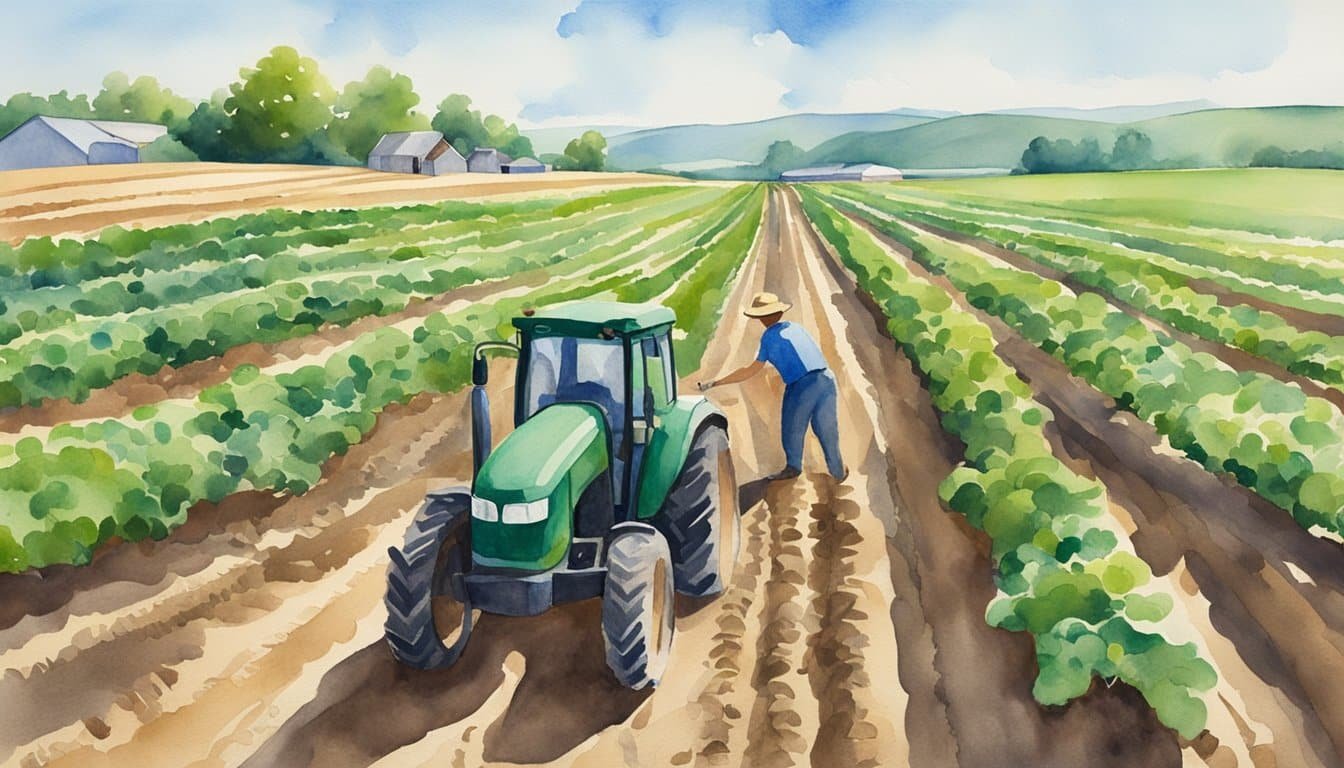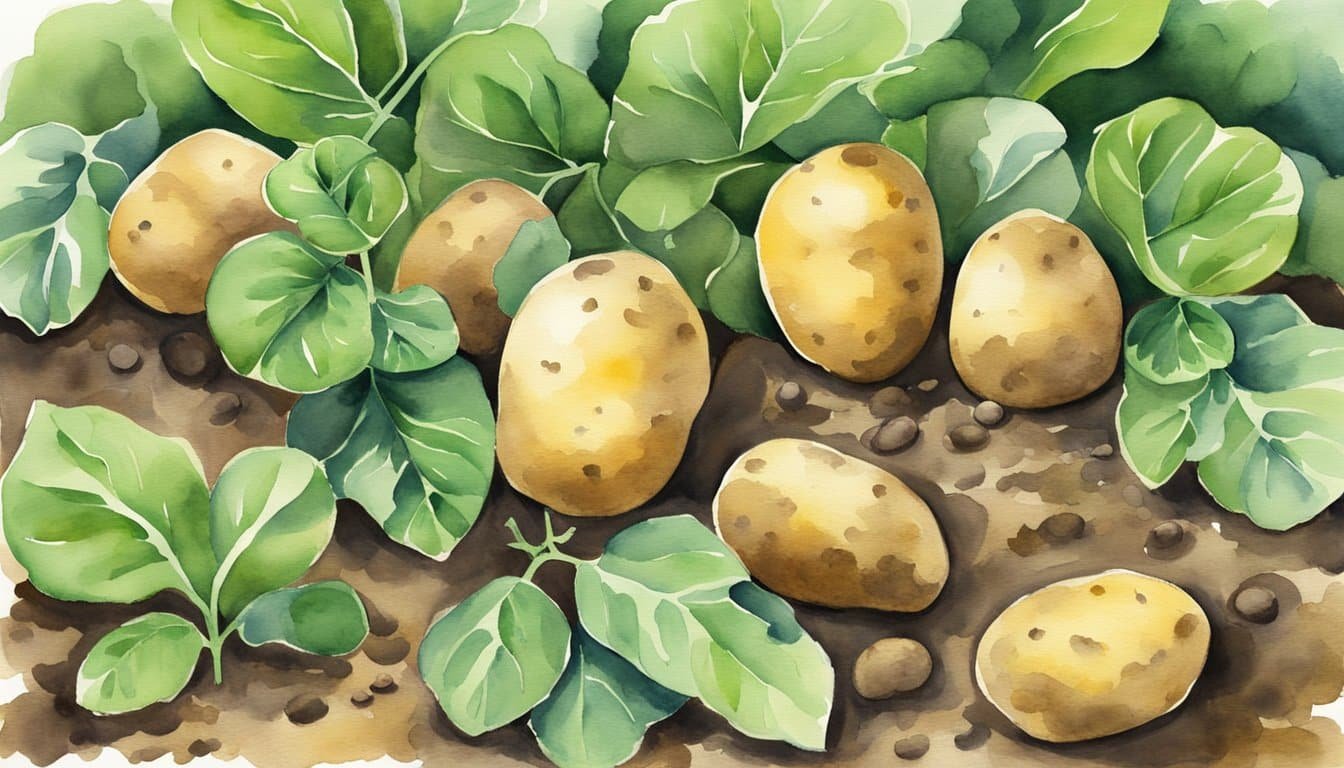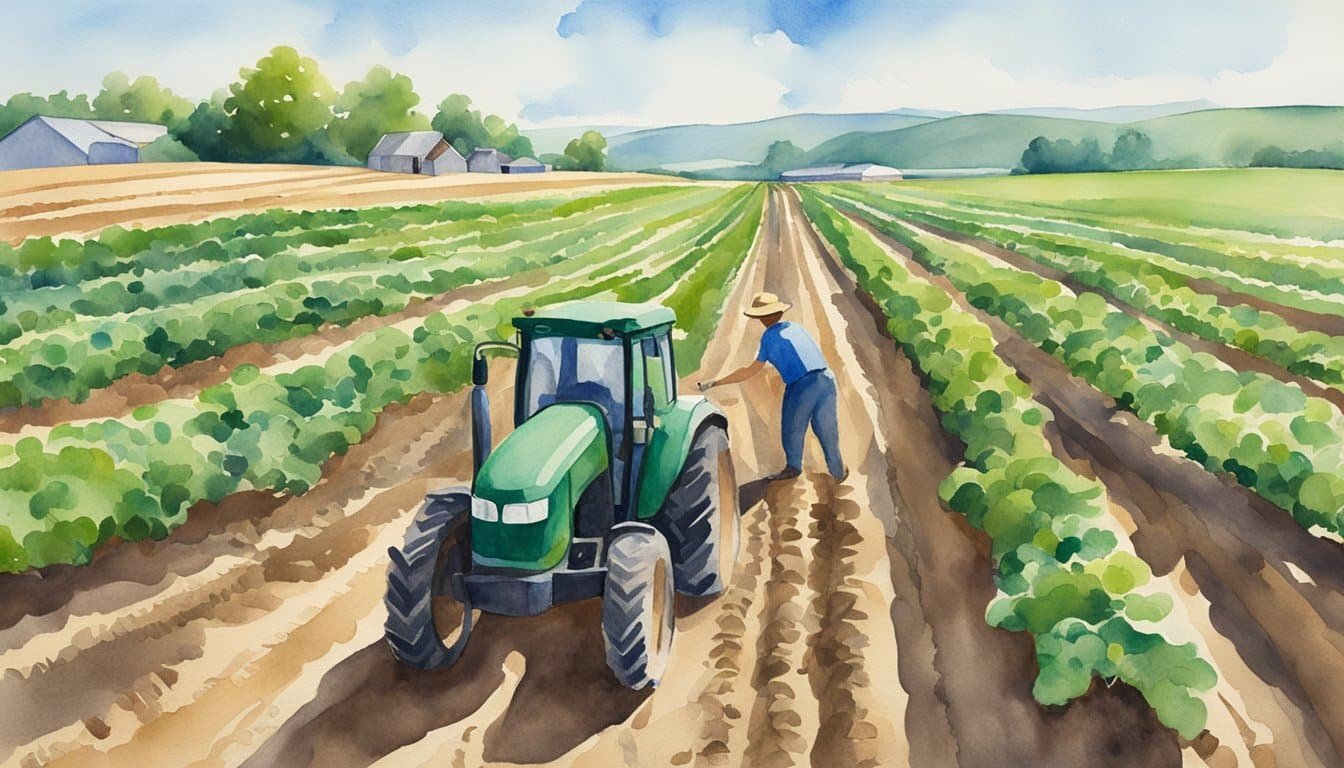Origins and History
The humble potato has a rich tale that begins in the heart of South America and spreads across the globe. This starchy tuber played pivotal roles in history—traveling from its ancestral Andean highlands to grace the tables of Europe and beyond.
The Journey from South America
Potatoes, as we know them, started their journey in the Andean regions of South America, specifically in modern-day Peru and northwestern Bolivia. Evidence suggests that the area around Lake Titicaca is likely where the potato was first domesticated, dating back to 8000 BC to 5000 BC. The Incas not only grew potatoes but also developed methods to preserve them, creating a freeze-dried product known as chuño, which remained edible for years.
Domestication and Global Spread
After centuries of cultivation in South America, the Spanish conquistadors brought the potato to Europe following their contact with the Inca Empire. It initially arrived in Spain around 1570 and from there made its way to other parts of Europe. Despite early resistance, potatoes gained popularity thanks to their robust nature and nutritional value. They could grow in diverse climates and became a staple, especially in places like Ireland.
The Role in Historical Events
The potato’s impact on history is profound. In Europe, it is linked to the Columbian Exchange, which dramatically altered the continents’ agriculture. Unfortunately, reliance on this crop also led to tragedy during the Irish Potato Famine in the 1840s when a potato blight wiped out the primary food source for a large portion of Ireland’s population. The famine catalyzed mass emigration and had lasting effects on Irish culture and history. The potato also gained a place in fashion when Marie Antoinette wore potato flowers in her hair to popularize the vegetable in French society.
Agriculture and Cultivation

When one thinks of potato cultivation, images of vast fields in Idaho or the rolling hills of Ireland often come to mind. But the tale of the potato is a global saga, touching on diverse practices from the terraced Andean slopes to the mechanized expanses of Russia and China.
Growing Conditions and Soil
Potatoes thrive in a range of environments, yet they all start from humble beginnings in the soil. A member of the nightshade family, Solanum tuberosum prefers well-drained, loamy soil with a pH between 5.0 and 6.0. In regions like Idaho, Washington, and Wisconsin, farmers meticulously prepare the ground to ensure it meets these conditions. The potato’s ability to flourish in various soils has made it a staple crop in countries as far apart as India and Germany.
Harvesting and Production
Harvest time is a crucial moment for potato farmers globally, from Maine to Ukraine. The tubers are ready for harvest once the leaves and flowers of the potato plant begin to wither, signaling that the crop has reached maturity. Most modern agriculture employs machinery to unearth potatoes efficiently. This labor-saving approach allows for the prodigious production levels necessary to help sustain the global food supply.
Pests, Diseases, and Genetic Diversity
Potato cultivation is not without its challenges. Pests and diseases, such as the notorious blight responsible for the Irish famine in the 1840s, continue to threaten crops. To combat these issues, genetic diversity is a central focus at research institutions like the International Potato Center. Resistant potato varieties are being developed to fend off pests and diseases. This diversity is essential for the crop’s resilience, ensuring potatoes remain a reliable part of our diet.
Exploring the rich tapestry of potato agriculture reveals an intricate blend of tradition, science, and innovation that crisscrosses our planet. Each potato, whether a Russet, Yukon Gold, or an exotic Andean blue, carries with it centuries of human ingenuity entwined with the natural evolution of this fascinating nightshade family member.
Nutritional Value and Uses

Potatoes are not only a global culinary staple but are also packed with important nutrients. From the humble home garden to vast commercial farms, these tubers have proven their worth through history.
Potato in the Diet
The potato, specifically S. tuberosum, has had a significant role in human nutrition since its rise as a major crop in the West since the 18th century. As a staple food, it provides essential nutrients such as vitamin C, thiamin, and niacin. The humble spud contains more protein than many realize, adding to its nutritional value. It’s worth noting that potatoes also contain compounds like solanine, which in large quantities can be toxic, although they are generally safe to eat when prepared properly.
For a precise understanding of their nutrient content, the scientific literature provides detailed reviews, such as those on the all-around benefits that potatoes offer to human health and the diversity in nutrient content among different potato varieties.
Culinary Diversity and Innovations
Potatoes enjoy a diverse culinary application across the globe, from the fluffy baking potatoes of North American comfort food to the silky gnocchi found in Italian cuisine. Not just confined to whole potatoes, innovators have transformed them into various products like potato flour, used as a thickener in cooking, or the universally loved french fries. Pioneering approaches in the kitchen and food industry continue to expand the use of potatoes, enhancing both their value and appeal in new and existing markets.
The potato’s metamorphosis from a simple garden vegetable into a cornerstone of innovation in the food service industry is an interesting journey, with aspects highlighted in the literature detailing the uses in processed potato products and the improvement of their nutritional value through breeding and modification.

